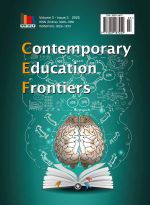Application of CBL Teaching Method in Clinical Microbiology Laboratory Training for Residents
DOI:
https://doi.org/10.18063/cef.v3i3.802Keywords:
Clinical microbiology testing, Case-Based Learning (CBL), Standardized training for resident physiciansAbstract
Clinical microbiology laboratory training for residents has long faced the limitations of traditional Lecture-Based Learning (LBL), which is characterized by an overemphasis on technical operations, inadequate cultivation of clinical thinking, and a disconnection between testing and diagnosis, and treatment. In this study, a case-sharing teaching model based on Case-Based Learning (CBL) was introduced, and a hierarchical and progressive teaching framework was constructed. Using common clinical infection cases as a carrier, the study implemented case screening, data collection, analysis, and reporting, stepped problem discussion, and multidimensional evaluation feedback in stages. Teaching practice has shown that the CBL model significantly improves trainees’ clinical interpretation skills of test results, antimicrobial drug decision-making logic, and multispecialty collaboration awareness, while strengthening autonomous learning and evidence-based thinking skills.
References
Pang X, Chen W, Chen X, et al., 2024, Practice and Reflection on Standardized Training for Resident Physicians in Laboratory Medicine. Chinese Continuing Medical Education, 16(21): 169–172.
Li H, Guo J, Huang Y, et al., 2024, Application of ASK Combined with CBL Teaching Method in Practical Teaching of Microbiological Testing. Continuing Medical Education, 38(4): 61–64.
Li X, Liu Z, Tang W, et al., 2021, Application of CBL Combined with PBL Teaching Method in Clinical Microbiological Testing Teaching. Journal of Anhui Medical College, 20(6): 97–99.
Fan S, Li X, Lin Z, et al., 2025, Application of CBL Teaching Method Based on PACS in the Teaching of Echocardiography for Congenital Heart Disease During Residency Training. Chinese Post-graduate Medical Education, 9(5): 348–351.
Wen X, Zhang J, Liu Y, et al., 2025, Application of CBL and MDT Combined Teaching in Standardized Training of Resident Physicians in Nuclear Medicine. Chinese Post-graduate Medical Education, 9(5): 366–369.
Kang H, Cao Y, Gu B, et al., 2021, The Significance of Case-Based Presentation in Practical Teaching of Clinical Microbiological Testing Techniques. Continuing Medical Education, 35(12): 72–74.
Wang J, 2022, Research on the Application of Clinical Thinking-Oriented CBL Teaching in Pathogenic Microbiology and Immunology. Talent and Wisdom, 2022(21): 80–83.
Meng J, Zhou S, Lu Y, et al., 2024, The Mode and Experience of Standardized Training for Resident Physicians in Laboratory Medicine at Ruijin Hospital. Journal of Diagnostics Concepts & Practice, 23(2): 210–213.
Zhao Y, Huang Y, Ling Y, et al., 2023, Discussion on Cultivating Clinical Thinking of Interns in Practical Teaching of Microbiological Testing. Chinese Continuing Medical Education, 15(14): 185–188.
Ye Y, Zhang W, Li G, et al., 2023, Practice of Cultivating Clinical Thinking Based on Cases in the Training of Microbiological Laboratory Physicians. International Journal of Laboratory Medicine, 44(7): 893–896.
Wang X, Li Y, Zhou X, et al., 2023, Teaching Reform and Practice of Clinical Microbiological Testing Technology Based on Mixed Teaching. Basic Medical Education, 25(5): 412–414.
Wu W, 2023, The Development Direction of Clinical Microbiology in the New Era. International Journal of Laboratory Medicine, 44(15): 1803–1805.
Yan J, Mao X, Li Q, 2022, Practice and Inspiration of Teaching Reform in Medical Laboratory Technology. Laboratory Medicine and Clinic, 19(22): 3162–3166.
Guo J, Zhuo W, Huang Y, et al., 2024, Application of CBL-OSCE Teaching Mode in the Teaching of Microbiological Testing for Further Students. Medical Education Research and Practice, 32(1): 70–73.
Chen X, Wang Y, Yao L, et al., 2024, Exploration of the Teaching Mode of Clinical Microbiological Testing in the Standardized Training of Laboratory Physicians. Journal of Clinical Laboratory Science, 42(5): 360–362.

